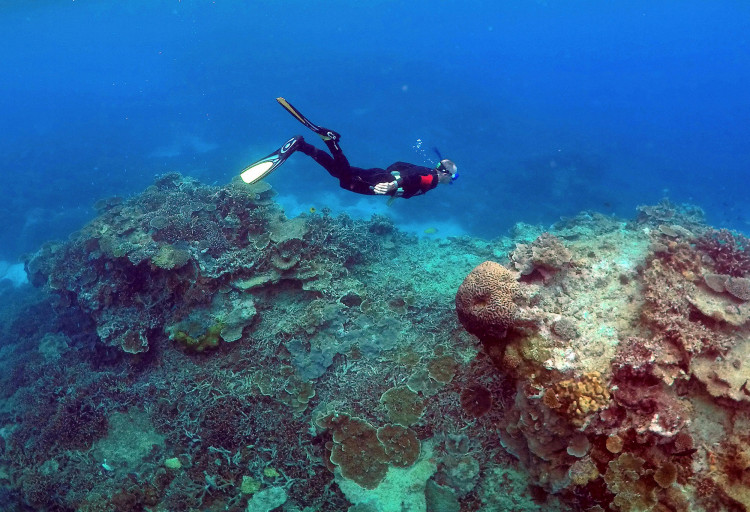When unexplained holes were discovered this week 1.7 miles below the surface of the Atlantic Ocean, scientists were baffled. The origin of the exactly matching pits, while creating a straight line across the seafloor, is still unknown. Additionally, the National Oceanic and Atmospheric Administration (NOAA) was so perplexed that it even made a public call for help. NOAA posted two pictures of the precisely aligned trenches on social media.
The odd holes were discovered by the Okeanos Explorer crew of the National Oceanic and Atmospheric Administration (NOAA), who were investigating the Mid-Atlantic Ridge, a huge portion of the world's greatest mountain range that sits on the seafloor.
The holes are surrounded by tiny sediment mounds and are arranged in a straight line at regularly spaced intervals. Two marine scientists from the U.S. have previously discovered holes in the region. During a dive in 2004, the National Marine Fisheries Service also discovered enigmatic hollows on the ocean floor.
The NOAA researchers stated on Facebook that although these holes have previously been observed in the area, it is still unclear where they came from. The small heaps of sediment surrounding the holes give them an almost human appearance, but they actually appear to have been dug by something.
The holes' precise origins are unknown because no one has ever witnessed an organism living in or sifting through the sediment of the seafloor, which was the theory put out by scientists in 2004. Under the NOAA post's Facebook page, a variety of wild theories were floated by the public, including cracks in the floor caused by gas escaping, underwater human ships searching for treasure, ants, aliens, and even starfish doing cartwheels.
An underwater "yellow brick road" to Atlantis was found by ocean explorers on top of an underwater mountain close to Hawaii in May, and the unsolved riddle is similar to that found. The odd trail was thought to have been constructed by several volcanic eruptions heating and cooling the seafloor, according to scientists who explained the discovery.
Notably, it is exceedingly doubtful that any underwater gas pipelines are present in the Mid-Atlantic Ridge's deep waters, which are largely unexplored, according to Daily Mail.
On the other hand, determining what is causing the holes could take some time. As part of the Voyage to the Ridge 2022 trip, the researchers will continue their exploration of the area until September. This expedition's goals include mapping the area's coral reefs and sponge ecosystems, as well as researching its hydrothermal vents, fracture zones, and rift zones. If they're fortunate, they might be able to capture the hole-maker in the act.






